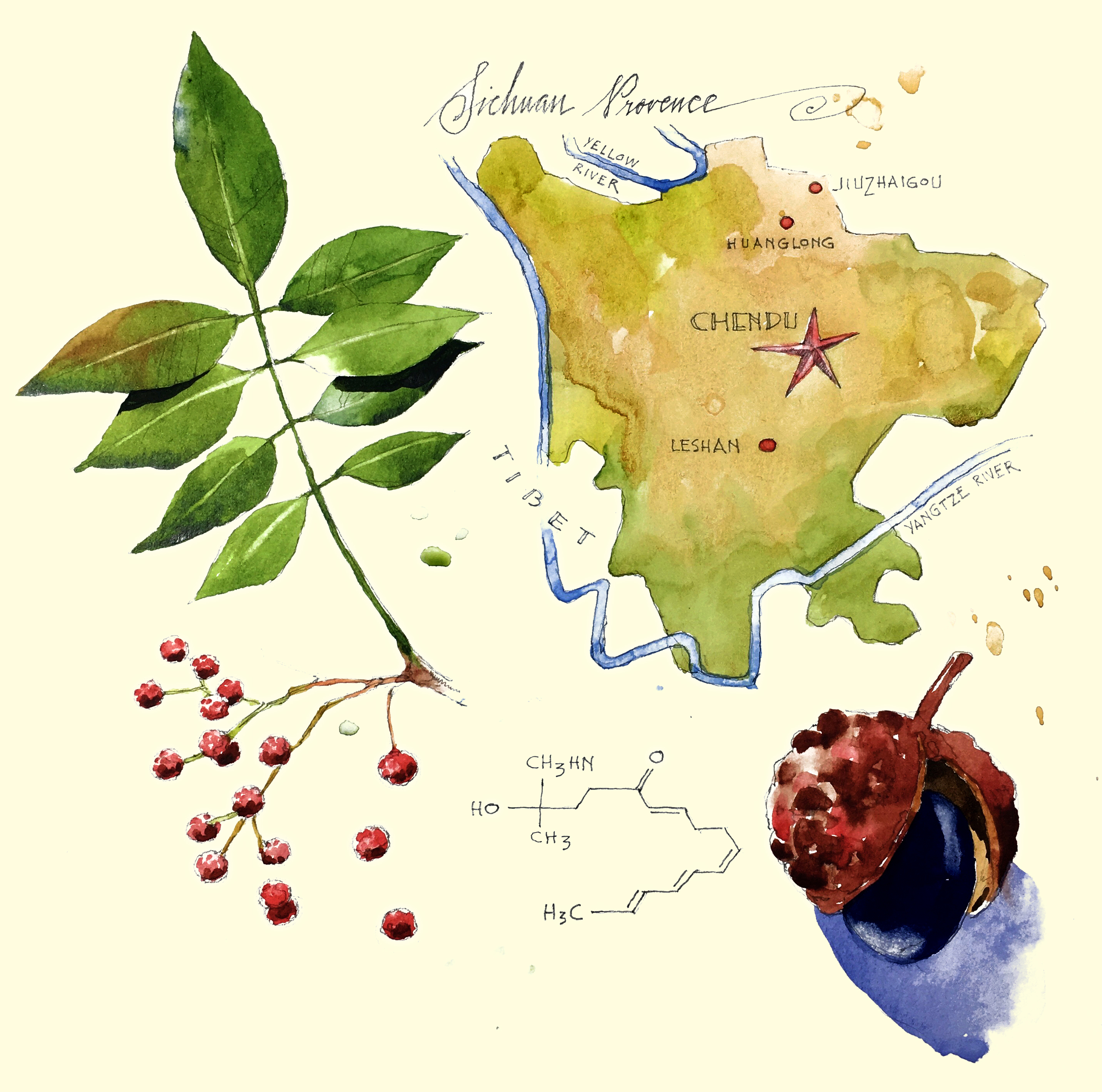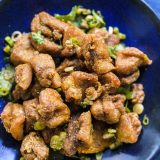Among the chaotic streets of Chengdu, China, things are often not what they seem. That's especially the case for la zi ji, a Sichuan chicken dish so crowded with whole chilies, they obscure the crispy chunks of juicy meat underneath.
It's a common order in Chengdu, where the ground floor of virtually every building houses a restaurant, presenting the city's 12 million residents thousands upon thousands of dining options.
That overabundance of options is “why food culture is so crazy here,” says Chengdu resident and Sichuan-food scholar Justin Hoke. “I couldn't even begin to recommend a restaurant.”
Hoke has a general rule of thumb, though: Dingy is good.
Besides a crowd, look for plastic chairs and the buzz of flickering fluorescent lights, places that don’t have signs or names. It's not unusual to see waiters sweeping picked-clean chicken bones off the floor, discarded by sated customers.
Not exactly the Western ideal of fine dining. But these holes in the wall don't need to spend money on appearances—their food does the marketing.
The deceptive scene is a prelude to la zi ji. The dish arrives on a plate piled high with thin red chilis, scattered with small hunks of bone-in chicken that has been freshly seared in a battered, flame-scarred wok.
As intimidating as la zi ji looks, it's not nearly as spicy as its appearance would intimate. When you take a bite of chicken, you can feel it in your face, but its not eye-watering—it's tongue-tingling. The dried chilies impart flavor but aren’t even meant to be eaten.
Sometimes called ma la or Chongqing chicken, the words la zi ji only mean chicken with chilies, and there are countless variations. The chicken has often just been feathered before the cook chops it into small pieces and stir-fries it—meat, skin, bones and all—in a small amount of oil. It's rarely coated with anything and may be deep-fried first before being finished in a wok with garlic and scallions. Some cooks add chili oil or paste at the end; others don't.
All versions, however, include one complex ingredient native to the region: Sichuan peppercorns. Used to season the chicken, they give it a citrusy, floral note, followed by a numbing, almost prickling sensation (for the science of Sichuan peppercorns, see below).
It's a 20th-century dish that originated in a small village in neighboring Chongqing and has spread to Chinese takeout menus around the world, usually footnoted with the symbol of three little chili peppers.
That's how it appears on the menu at Framingham, Massachusetts' Sichuan Gourmet restaurant, where we had our first taste of la zi ji-style chicken, albeit one that markedly differs from what's found in Chengdu. Billed as dried chicken with chili sauce, hunks of chicken far outnumber the fistful of blistered slivers of dried and fresh chilies. The chicken is lightly dredged in cornstarch and tossed in a spicy Sichuan-peppercorn sauce that has upfront heat and a tongue-tingling finish.
For us, it was a transformative approach to chicken—crisp and bite-sized, but entirely different from heavily breaded American popcorn chicken. And its distinct Sichuan seasoning made it almost addictive.
Since it is near-impossible to replicate the heat of a Chinese stovetop in an American kitchen, we took some liberties to ensure our dish would come out crispy while remaining faithful to Sichuan flavors.
We began by marinating boneless, skinless chicken thighs in a mix of soy sauce, rice vinegar and white sugar (to help balance what we knew would be a spicy dish). Egg white, lightly beaten and mixed into the marinade, helped it and our coating better adhere to the meat. We dredged it in a blend of cornstarch, sugar, salt and ¼ cup's worth of ground toasted Sichuan peppercorns.
The resulting chicken was crunchy, tender and had the peppercorns' citrusy flavor and tingling effect. It was a good start to replicating la zi ji's flavor, but it lacked the requisite spice. Rather than pile the dish with dried Sichuan chilies for aesthetic effect, we harnessed their heat by making a chili oil.
We mixed Sichuan chili flakes and more Sichuan peppercorns with a cup of whole dried red Sichuan chilies and peanut oil. The process took five minutes and gave us a scarlet-red chili oil to toss the fried chicken with, one which added moderate heat to the dish without any intimidation.
Our version of la zi ji managed to achieve a delicious balance that's required for calling a dish Sichuan—sweet and salty, crispy and juicy, spicy and numbing.
“Sichuan is known for being really bold, but it’s not as fiery as people in the West think it is,” says Hoke. “It’s very pronounced. They like strong flavors.”
Many Westerners who eat Chengdu's la zi ji mistakenly attribute the numbing sensation it induces to the chilies that come with the dish. In fact, the trademark tingling arises from a compound in Sichuan peppercorns called hdyroxyl alpha sanshools.
Sanshools stimulate neurons that create the perception of touch rather than heat. That's why one almost feels their lips and mouth vibrating after eating something seasoned with Sichuan peppercorns—which aren't actually peppercorns at all.
They are the dried husks of a seed that grows on a tree in the citrus family native to Sichuan. The peppercorns come in red and green varieties—the former carrying a stronger, more earthy flavor and the latter a brighter, pinier aroma.
In China, both red and green come in several variations that carry different flavors based on when they were harvested. Such a selection is rarely found in the United States, where red peppercorns are the most common.







